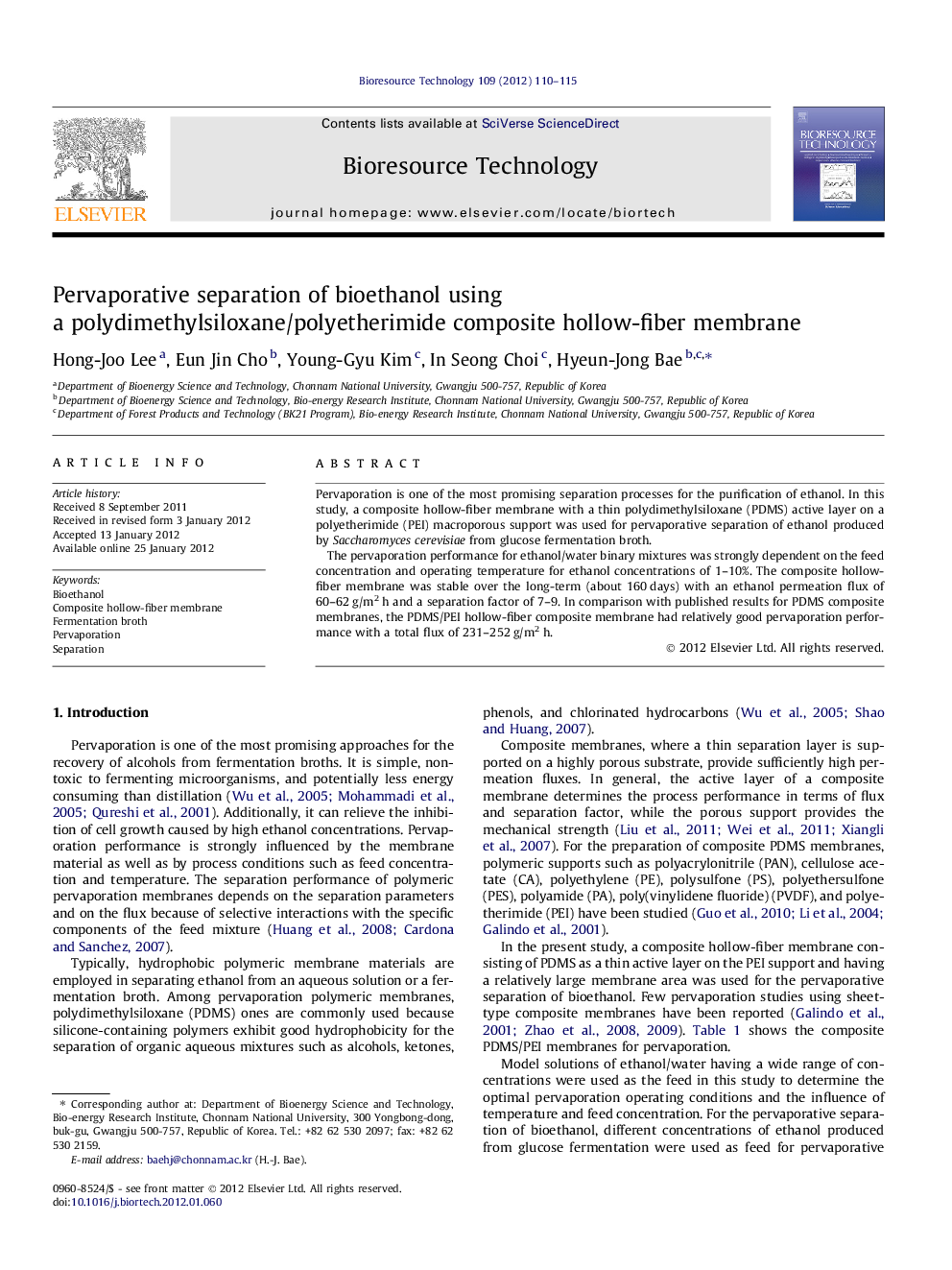| Article ID | Journal | Published Year | Pages | File Type |
|---|---|---|---|---|
| 681621 | Bioresource Technology | 2012 | 6 Pages |
Pervaporation is one of the most promising separation processes for the purification of ethanol. In this study, a composite hollow-fiber membrane with a thin polydimethylsiloxane (PDMS) active layer on a polyetherimide (PEI) macroporous support was used for pervaporative separation of ethanol produced by Saccharomyces cerevisiae from glucose fermentation broth.The pervaporation performance for ethanol/water binary mixtures was strongly dependent on the feed concentration and operating temperature for ethanol concentrations of 1–10%. The composite hollow-fiber membrane was stable over the long-term (about 160 days) with an ethanol permeation flux of 60–62 g/m2 h and a separation factor of 7–9. In comparison with published results for PDMS composite membranes, the PDMS/PEI hollow-fiber composite membrane had relatively good pervaporation performance with a total flux of 231–252 g/m2 h.
Graphical abstractThe pervaporation performance maintained in the long-term stability test of the PDMS/PEI composite hollow-fiber membrane.Figure optionsDownload full-size imageDownload as PowerPoint slideHighlights► A composite hollow-fiber membrane was used for pervaporative separation. ► Ethanol flux and selectivity has a strong dependence on the feed concentration. ► Pervaporative ethanol separation shows good performances. ► Pervaporation membrane maintained performance in the long term test.
